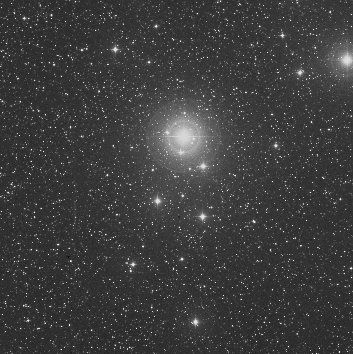
 |
The bright star, fifth magnitude 10 Monocerotis, is the luminary of the open cluster NGC 2232 in Monoceros, which lies just over two degrees north of Beta Mon. With an angular diameter of about half a degree, at the star's distance of 1420 light years, the understudied young cluster (25 to 30 million years old) is 10 light years across. (STScI Digitized Sky Survey) |